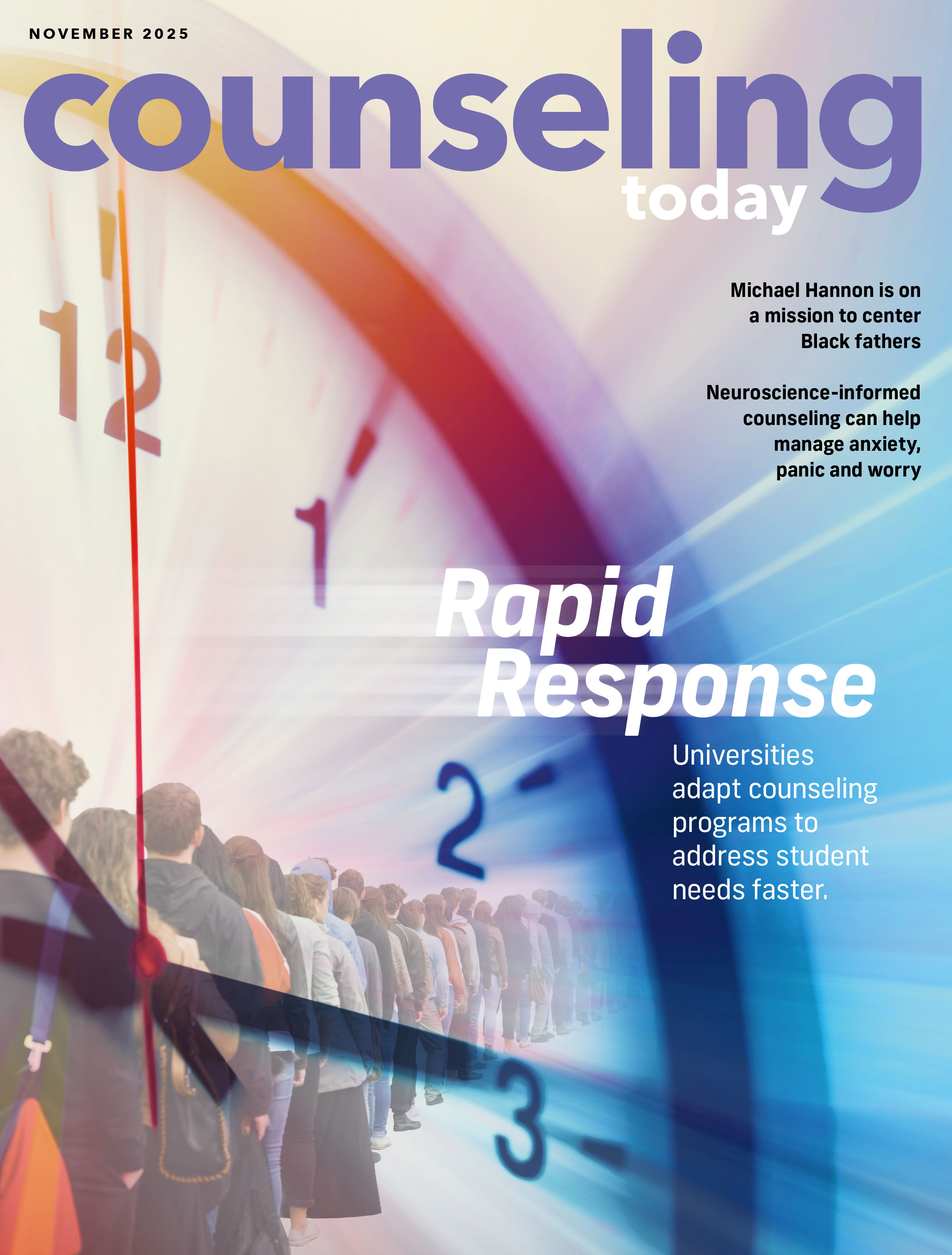From Visualization to Actualization: Exploring Client Experiences with Vision Boards
 By Donnette Deigh, PhD, LCPC, NCC
By Donnette Deigh, PhD, LCPC, NCC
Vision boards — visual representations of a person’s goals, dreams and aspirations — have evolved from motivational tools to psychological aids. The creative process involved in their design acts as a bridge between the conscious and the subconscious, making them a unique and powerful therapeutic tool. Among various artistic and cognitive tools, vision boards have gained significant attention for their potential psychological benefits. Counselors can consider applying vision boards within therapeutic settings and various populations to enhance client experiences and facilitate personal growth.
Using Vision Boards in My Work
As a therapist, counselor, clinical supervisor and educator, I started my journey of implementing vision boards as a therapeutic tool while working with the military population and service members who presented varied issues that affected their ability to obtain resilience. Eventually, my work expanded from using vision boards as a tool with master’s counseling students exploring their own professional development to using vision boards to collect data in my dissertation on past mentorship experiences and future goals with counselor educators. These populations developed a deeper connection to their inner motivations and personal commitments to inspire action toward creating a fulfilling life even after they left a session or group.
Innovation Through Vision Boards
With the increasing recognition and embrace of mental health and wellness, many people are seeking innovative, effective tools to support their mental health journey. Vision boards, with their visually driven appeal, can attract clients interested in unconventional therapy methods. In addition, in today’s digital age, people can create vision boards both physically and virtually, which helps counselors reach a broader audience accustomed to digital tools.
Benefits for Clients
I have a strong passion for vision boards and have witnessed their impact with clients, students and community members. The combination of the counselor’s knowledge and the client’s experiences in the counseling space can be fulfilling and powerful, providing insights to others who may be new to the concept.
Vision boards can help to guide people through life’s transitions and uncertainties and provide a sense of support and reassurance. Vision boards can provide a visual testament of a client’s progress over time and offer tangible proof of their growth and achievements, which can be profoundly validating and encouraging.
Further, the act of creating a vision board can be a form of mindfulness, encouraging clients to focus on the present moment and engage in the process. This mindfulness aspect can reduce stress and anxiety, promoting a sense of calm and well-being. Counselors can creatively enhance their counseling skills by incorporating vision boards into their therapeutic approaches.
Tips for Using Vision Boards
Here are some practical tips to include vision boards in different therapeutic modalities:
- Cognitive Behavioral Therapy: Use vision boards to identify negative thought patterns and replace them with positive imagery. Clients can create boards that reflect their goals for behavior change, such as healthier lifestyle choices or improved self-esteem.
- Person-Centered Therapy: Encourage self-exploration and expression through personal and meaningful imagery in a free, nonjudgmental way. Clients can gain insight into their authentic selves, which may lead to deeper self-acceptance and personal growth.
- Solution-Focused Therapy: Emphasize future-oriented goals and positive outcomes. Clients can visually outline their goals, successes and desired outcomes. By concentrating on what they want to achieve, clients can create a motivating visual that guides their progress and reinforces a solutions-oriented mindset.
- Trauma-Informed Therapy: Provide a safe, non-verbal outlet for trauma survivors to express their experiences and aspirations. Clients can use their boards to visualize healing and resilience, marking progress toward emotional recovery while reinforcing their strengths and coping abilities.
- Group Therapy: Encourage collaboration, support, feedback and inspiration. Clients can foster a sense of community and accountability as they work toward their goals together.
By integrating vision boards into counseling, counselors can create a supportive and engaging environment where clients feel empowered to explore their aspirations and commit to achieving them. This creative approach not only enhances therapeutic outcomes but also fosters resilience, motivation and a deeper sense of purpose in clients’ lives. Ultimately, vision boards can be a visual reminder of one’s objectives while fostering a dynamic, participatory environment to promote empowerment, actionable steps and positive change in clients.
Donnette Deigh, PhD, LCPC, NCC, is an assistant professor in the Master of Arts in Clinical Counseling program at Alliant International University. Her scholarship interests include culturally responsive supervision, mentorship and counseling; preventative mental health and wellness practices for resilience in minoritized populations; counselor identity and development; and academic achievement.
Note: Opinions expressed and statements made in this blog do not necessarily represent the policies or opinions of ACA and its editors.

